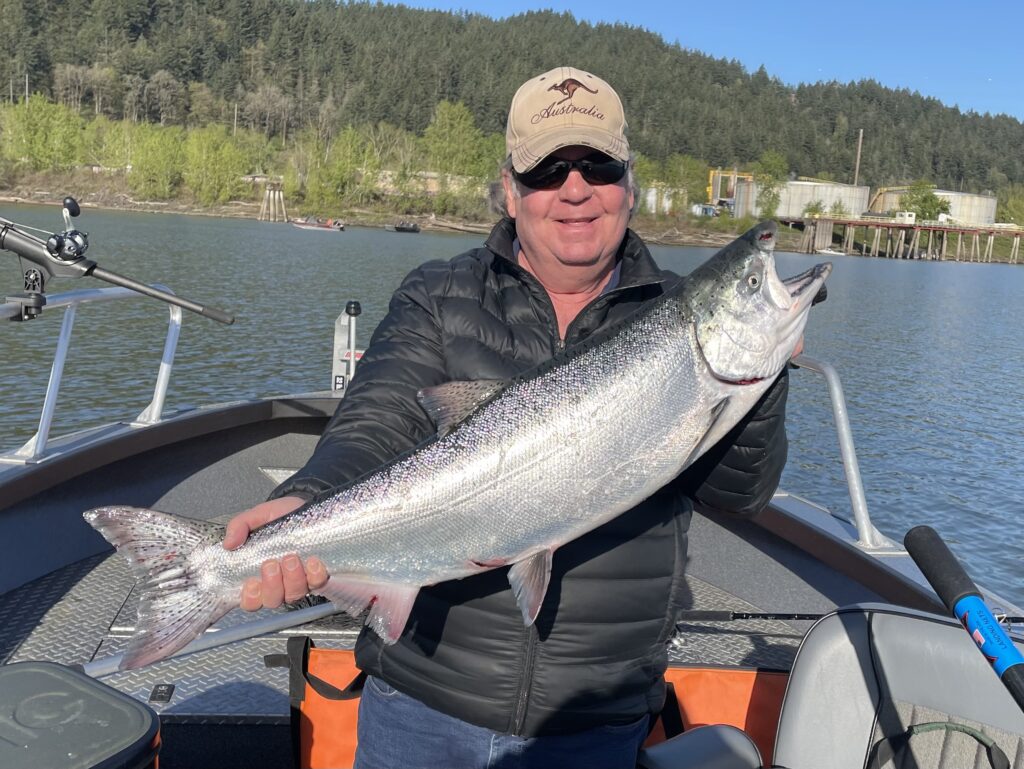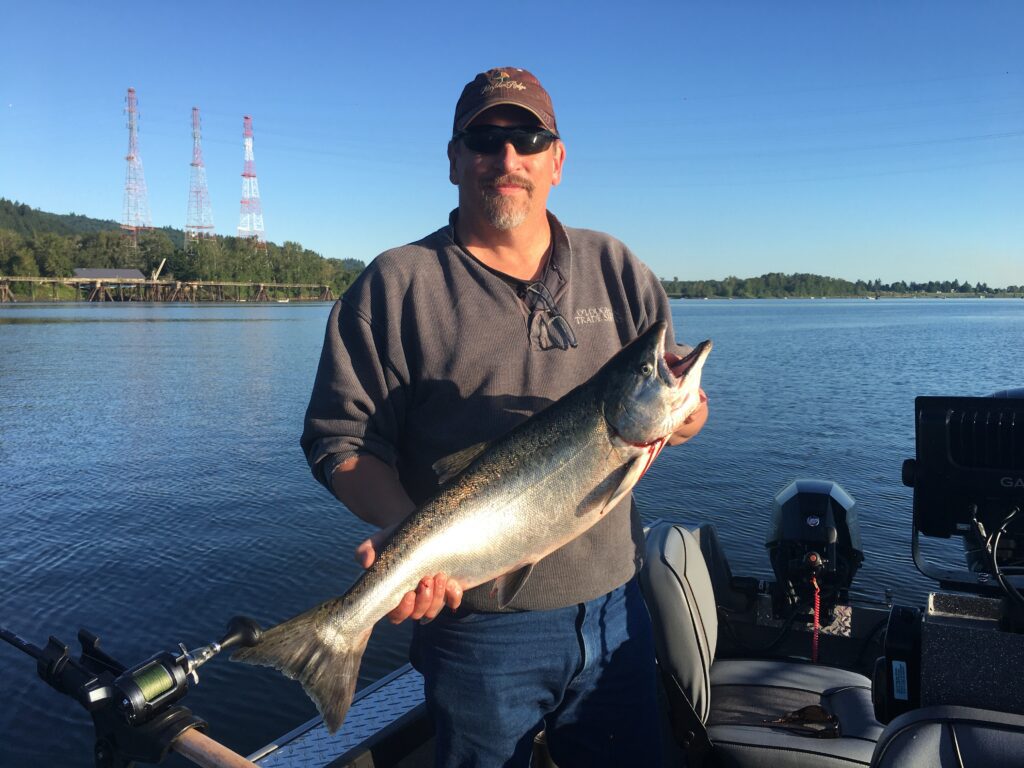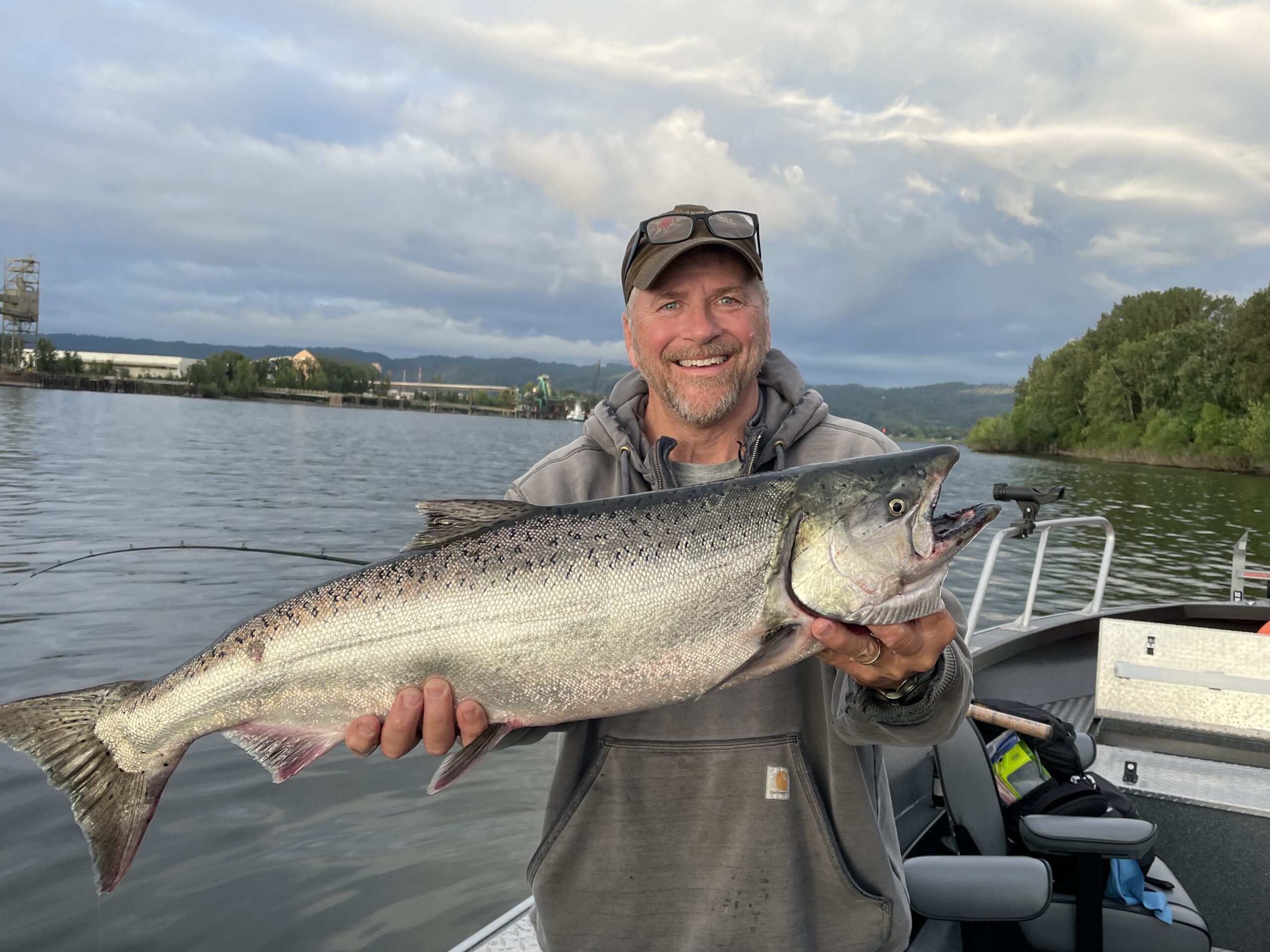The Springer Season Continues…
A growing cadre of spring chinook enthusiasts use April and May to tune-up for fishing in June. For many of us, June’s the month.
The action’s in the lower Willamette River and Multnomah Channel. From early-June until mid-July, trollers in all manner of boats will drag a variety of spinners, SpinFish, wobblers and prawn spinners trying to coax a salmon to bite.
Make no doubt about it, spinners are king here but they’re not the only tool available.
There’s a nexus of fisheries that occur in June and July. Spring chinook are available with about 40% of the run still to come after June 1st. Summer chinook will start trickling in early in June but mid-June is considered the kick-off for summer chinook. Sockeye show too. And all of these runs find their way into the mouth of the Willamette and Multnomah Channel. Some are there just to mill around and head on up the Columbia and a few Willamette-bound springers continue their journey to either the Clackamas or further upriver into tributaries above Willamette Falls.
The area to fish is from the St. Johns Bridge to the mouth and the mouth of Multnomah Channel. You’ll see where the fishing is by the collection of boats. Kayaks, inflatables, cruisers, open aluminum boats, offshores…they’re all there in force and trolling for their chance at a salmon.
The rigging’s straightforward. I won’t say “simple” because if you haven’t done it the string of gear used looks daunting, but it’s not. If you understand it and what it’s intended to do it all makes sense.
You’ll need a rod and reel combo capable of handling 16 ounces of lead. That’s important. There are rods expressly designed for fishing 360 flashers and using these heavy weights. The design of these “360 rods” allows the top 20%-30% of the rod to show the pulse of the flasher as it rotates. This is important so, at a glance, you know the flasher’s working. Increasingly, I’ve grown to prefer monofilament lines for fishing flasher/spinner combos. About half my rods are rigged with braided lines the other half with monofilament.
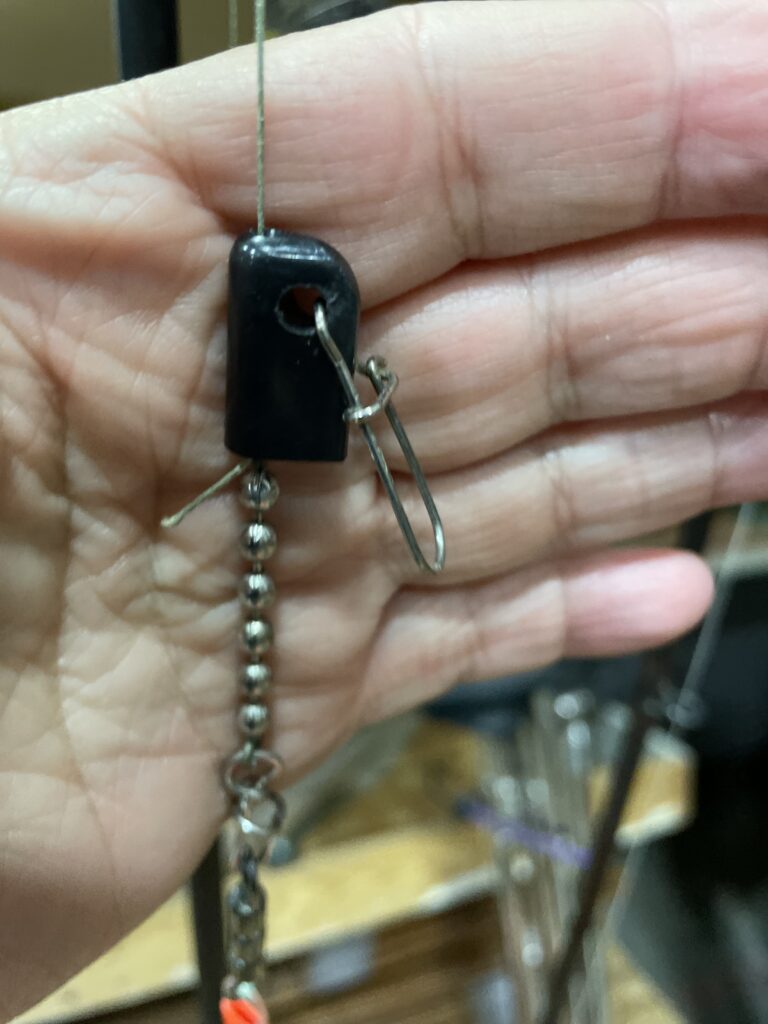

Here’s a tight shot of a Line Lock. You attach your weight to the clip.
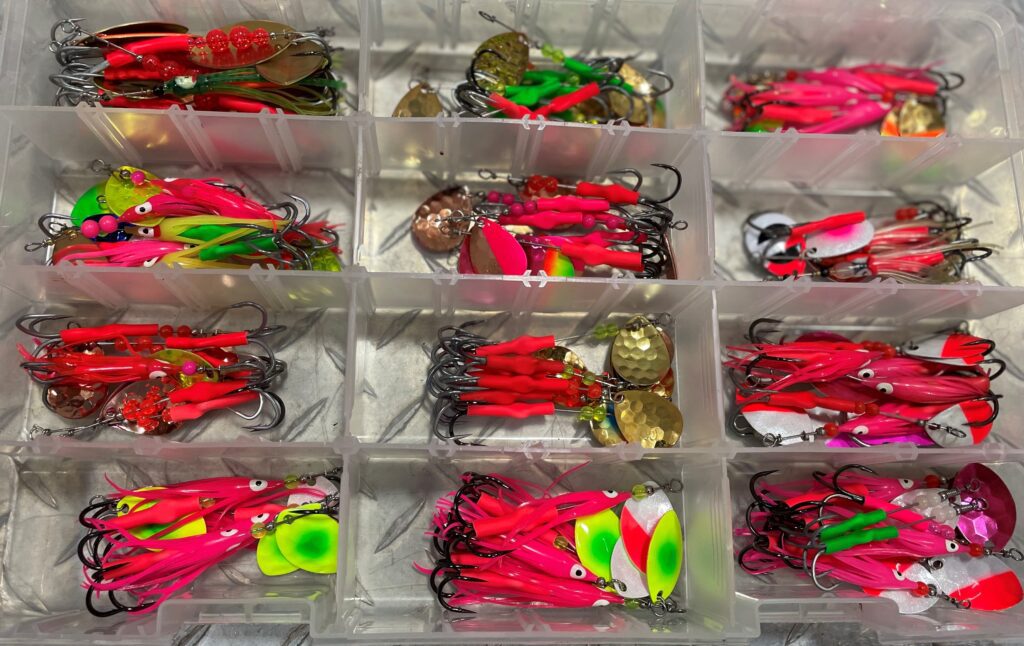

You’ll need a good selection of spinners, use any size just so long as they’re 3.5’s.
If I’m fishing mono, I like 30 pound test line. If it’s braid, then 50 pound test.
The rigging for fishing 360 flashers starts with a Line Lock slider (produced by VIP Outdoors) on your main line, tied to a 5 bead chain swivel, attached to a 24” bumper, that’s attached to your Pro Troll Flasher, with another chain swivel tied to a 28” leader and your 3.5 spinner at the end.
Spinner size is critical. If you fish a bigger spinner the flasher likely won’t rotate. Same goes for fishing a blue label herring or anything that’s too big and restricts the rotation of the flasher.
Everything in this rigging has a purpose.
The Line Lock slider not only allows your weight to slide freely up and down your line, it also eliminates the use of a dropper which is an infinitely better rigging when you go to net your fish. Having that weight swinging around on its own has resulted in many (and that’s lots of “many”) a lost springer. Most importantly, the Line Lock slider, when properly rigged, locks your bead chain swivel into the slider which enables the swivel to work and thus prevents line twist.
Next, the bead chain swivel, really five swivels in one, vastly reduces line twist.
That bead chain swivel is attached to your 24” bumper. The “bumper” is the length of line between your weight and your 360 flasher. The weight anchors your flasher and the 24” length delivers optimum rotation on your flasher.
The bumper is attached to your flasher which not only serves as a flash attractor but also imparts action to whatever lure or bait you’re using. In the case of the Pro Troll flasher, with its patented single rudder is unique as the flasher rotates unevenly which adds a bite-stimulating kick to whatever you’re fishing.
Leader length is critically important. As you increase the length of your leader you’ll buffer the action of the lure. Too short and your lure or bait will be too close to your flasher and you’ll get fewer, if any, strikes. In most cases, 28” is a good length to start with. Increasing or decreasing that length by a couple of inches is something you can experiment with.
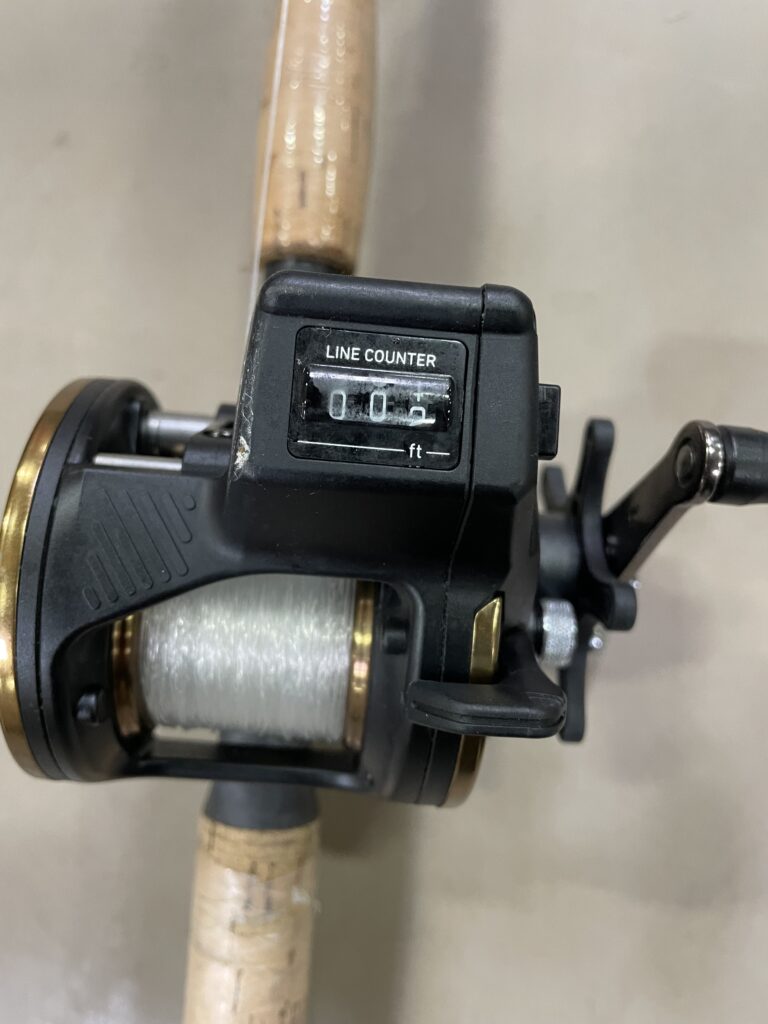

Line counter reels have become essential equipment for many of our salmon fisheries in the NW. You can accurately set your depth across several rods.
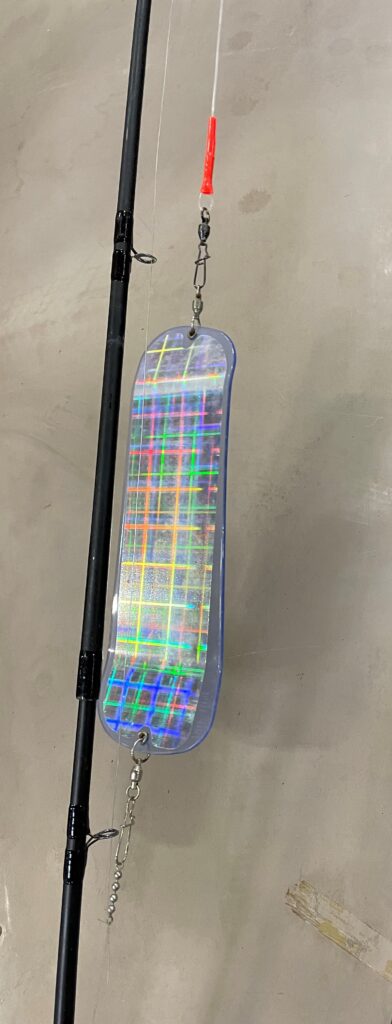

Use of 360 flashers has been a game-changer for salmon fishing everywhere. Here you can see the “bumper” attached to the top and leader to the spinner on the bottom.
Of course, you’ll want to tie your leader to a swivel that’s attached to the ball bearing swivel that comes with any standard 360 flasher.
Then it’s all about speed and depth.
On the Willamette you can purchase a two-rod endorsement which means, with the proper license, you can fish two rods each. Three people six rods. Ideally, you’ll run the back rods the deepest. The “back rods” are the ones closest to the transom/stern of the boat. Those rods are the first ones to be deployed. Next are the middle rods. I generally run those 5’ shallower. The front rods, those closest to the bow, another 5’ shallower.
That means I’ll start with the front rods at 20’, middle rods at 25’ and back rods at 30’. I’m covering three different columns of water. It also keeps all the rods clear of each other and prevents them from getting tangled. When these flashers get tangled it’s a mess and you’ll lose valuable fishing time re-rigging those tangled rods. That’s also the reason to deploy the rods in the back-to-front order. That is, rear rods out first, middle rods next and front rods (closest to the bow) last. Doing those two things, the order and depth you let the rods out will vastly reduce your chances of getting tangled…it will also improve your chances of hooking fish.
When trolling it’s always a good idea to make long gentle turns and avoid sharp turns that can get your gear fouled in your trolling motor prop.
Speed is determined by the pulse of your rods. You’ll see as you speed up, the scope of your line (angle to the water) will increase and the top section of your rod will signal the rotation of the flasher. I like the rod tip pulsing at least once a second and often times I’m running at 2 to 3 pulses a second depending on what I’m running behind my flasher.
SpinFish for example are best fished fast. As Yakima Bait Company pro and marketing manager Jarod Higginbotham recommends, “If you’re not getting bit, speed up!”
Another pro tip from Jarod, he likes the 2.0 size for springers and pink’s his favorite color, followed by Mexican Hat. Mexican Hat and red/white and cerise/white are also great spinner blade colors. Jarod rigs his 2.0 SpinFish with 2/0 hooks. I take it a step further and add a small pink hoochie and use pink Gamakatsu Octopus hooks.
The best part is from the first week of June well into July you can expect very good fishing in this area of the river. And when the Columbia opens (at this writing it’s open right now) then you have another excellent option to try with plenty of spring chinook still in the river, summer chinook starting to show and peaking in early July and early fall chinook trickling in. The biggest change you’ll make fishing the Columbia is changing everything you’re fishing to barbless.
Always check the regulations before setting out. The Columbia especially is tightly managed to protect sensitive upriver stocks of salmon and steelhead. The Columbia, for example, generally has a one salmon limit while the Willamette has a two-salmon limit.
The beauty of the lower Willamette fishery is you can fish it out of just about any boat. The charm of the lower Willamette fishery is even though you’re in a major metropolitan area, it doesn’t feel that way. In fact, when you’re at the mouth of the Willamette it’s hard to believe you’re smack in the middle of nearly two million people.
Take our advice, second season springers are well worth your time…in our opinion it’s your best chance to catch one — especially if you follow the advice in this blog.
Good fishing!
